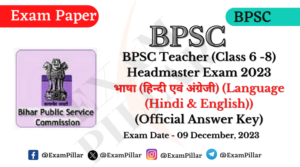101. During 10000 BC, the population of the world was
(A) 2 million
(B) 3 million
(C) 4 million
(D) 5 million
(E) None of the above
Show Answer/Hide
102. Cocos Plate lies between
(A) Central America and Pacific Plate
(B) South America and Pacific Plate
(C) Red Sea and Persian Gulf
(D) Asiatic Plate and Pacific Plate
(E) None of the above
Show Answer/Hide
103. ‘Rust Bowl’ of the USA is associated with which one of the following regions?
(A) Great Lakes region
(B) Alabama region
(C) California region
(D) Pittsburg region
(E) None of the above
Show Answer/Hide
104. Which one of the following approaches is associated with Prof. Amartya Sen?
(A) Basic needs Approach
(B) Capability Approach
(C) Income Approach
(D) Welfare Approach
(E) None of the above
Show Answer/Hide
105. Which one of the following is known as the ‘Coffee Port’ of the world?
(A) Sao Paulo
(B) Santos
(C) Rio de Janerio
(D) Buenos Aires
(E) None of the above
Show Answer/Hide
106. Which one of the following States has the highest percentage of area under forests?
(A) Himachal Pradesh
(B) Assam
(C) Andhra Pradesh
(D) Arunachal Pradesh
(E) None of the above
Show Answer/Hide
107. Which one of the following soils is deposited by rivers?
(A) Red soil
(B) Black soil
(C) Alluvial soil
(D) Laterite soil
(E) None of the above
Show Answer/Hide
108. What is the share of hydro electric power in the total electricity produced in India?
(A) 10 percent
(B) 12 percent
(C) 20 percent
(D) 22 percent
(E) None of the above
Show Answer/Hide
109. Which Census year is called ‘Demographic Divide’ in the population study of India?
(A) 1911
(B) 1921
(C) 1931
(D) 1941
(E) None of the above
Show Answer/Hide
110. The largest number of cotton mills in Tamil Nadu are found in
(A) Chennai
(B) Coimbatore
(C) Madurai
(D) Salem
(E) None of the above
Show Answer/Hide
111. Which one of the following States is the leading producer of rubber in India?
(A) Tamil Nadu
(B) Kerala
(C) Karnataka
(D) Andhra Pradesh
(E) None of the above
Show Answer/Hide
112. National Waterway-1 connects
(A) Kottapuram to Kollam
(B) Sadiya to Dhubri
(C) Haldia to Allahabad
(D) Haldia to Kolkata
(E) None of the above
Show Answer/Hide
113. Khetri Belt of Rajasthan State is famous for
(A) Copper mining
(B) Gold Mining
(C) Mica mining
(D) Iron ore mining
(E) None of the above
Show Answer/Hide
114. Which one of the following rivers joins the Ganga at Fatuha?
(A) Son
(B) Punpun
(C) Sakri
(D) Balan
(E) None of the above
Show Answer/Hide
115. According to Koppean’s climatic classification , the climate of North Bihar may be explained as
(A) Cwg
(B) Aw
(C) CA’w
(D) CB’w
(E) None of the above
Show Answer/Hide
116. Which soil is predominantly found in the districts of Muzaffarpur, Darbhanga and Champran?
(A) Black soil
(B) Newer alluvium
(C) Older alluvium
(D) Red soil
(E) None of the above
Show Answer/Hide
117. The largest jute-producing district of Bihar is
(A) Siwan
(B) Gaya
(C) Vaishali
(D) Purnia
(E) None of the above
Show Answer/Hide
118. Triveni Canal has been constructed on the river
(A) Kosi
(B) Son
(C) Gandak
(D) Kamla
(E) None of the above
Show Answer/Hide
119. The salvation place of Mahavirji, the originator of Jain religion , is located at
(A) Maner
(B) Rajgir
(C) Pavapuri
(D) Jalan Fort
(E) None of the above
Show Answer/Hide
120. Kaimur Plateau is famous for
(A) copper
(B) limestone
(C) lithium
(D) bauxite
(E) None of the above
Show Answer/Hide












Q.22 d
mahamood abu zeid from egypt.
Thanks for the correction.
A.No. 85. Should be option (D) 42% – 14th Finance Commission Tax Devolution to states.